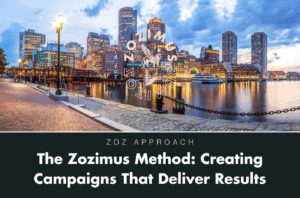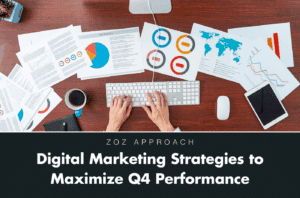User Experience is an interdisciplinary field, not an omniscient one. If you’re curious about UX, this piece may be up your alley. Read on to start learning about UX, what UX designers do, and an example of our UX process.
 You’ll notice the elements most often implemented in UX design are showcased in the grey T shape. As you can probably tell, there are numerous strategies, fields, and deliverables that comprise UX design. And, if someone is a UX designer, they usually specialize in certain areas rather than generalize in all areas. For example, at 451 Marketing, I’m often involved in business context analysis to interaction design in the UX Design Practice Verticals model. There’s also a difference between UX and UI design, but that’s a topic for another day.
The great thing about user experience design is that it’s a field that prizes collaboration, research, and empathetic design. So, a UX Designer is not typically a “jack-of-all-trades designer,” but is a person who is able to work seamlessly with different people to create user-centric designs.
You’ll notice the elements most often implemented in UX design are showcased in the grey T shape. As you can probably tell, there are numerous strategies, fields, and deliverables that comprise UX design. And, if someone is a UX designer, they usually specialize in certain areas rather than generalize in all areas. For example, at 451 Marketing, I’m often involved in business context analysis to interaction design in the UX Design Practice Verticals model. There’s also a difference between UX and UI design, but that’s a topic for another day.
The great thing about user experience design is that it’s a field that prizes collaboration, research, and empathetic design. So, a UX Designer is not typically a “jack-of-all-trades designer,” but is a person who is able to work seamlessly with different people to create user-centric designs.

 To visually communicate the products that we design, we create task flows, wireframes, and prototypes for our clients and for internal discussions. These items are fantastic tools to support iteration, usability testing, and communication. They are also one step closer to representing the final products that users will interact with when the products go live. Throughout user research and experience design, it’s crucial to validate ideas and designs through usability testing. Usability testing could be a separate discussion in and of itself, but in a nutshell, it is one method for gathering direct input from users to evaluate the overall quality of their user experience and identify usability issues. As much as possible, do not forego usability testing. It will save you time, money, and will help ensure that as designs progress, they stay user-centric.
To visually communicate the products that we design, we create task flows, wireframes, and prototypes for our clients and for internal discussions. These items are fantastic tools to support iteration, usability testing, and communication. They are also one step closer to representing the final products that users will interact with when the products go live. Throughout user research and experience design, it’s crucial to validate ideas and designs through usability testing. Usability testing could be a separate discussion in and of itself, but in a nutshell, it is one method for gathering direct input from users to evaluate the overall quality of their user experience and identify usability issues. As much as possible, do not forego usability testing. It will save you time, money, and will help ensure that as designs progress, they stay user-centric.
UX Designers – Occasionally Misunderstood as Swiss Army Knives
On a fairly regular basis, people ask UX designers what they do in their jobs. My favorite iteration of this question, “Are you kind of a “jack-of-all-trades” designer that can create whatever a client needs/wants?” In short, no. People in UX design are usually not the Swiss army knife designer – maybe if they are a fabled “unicorn.” To get this conversation started, let’s look at the following model. The UX Design Practice Verticals model showcases eight key areas of interest that may influence a UX design process. You’ll notice the elements most often implemented in UX design are showcased in the grey T shape. As you can probably tell, there are numerous strategies, fields, and deliverables that comprise UX design. And, if someone is a UX designer, they usually specialize in certain areas rather than generalize in all areas. For example, at 451 Marketing, I’m often involved in business context analysis to interaction design in the UX Design Practice Verticals model. There’s also a difference between UX and UI design, but that’s a topic for another day.
The great thing about user experience design is that it’s a field that prizes collaboration, research, and empathetic design. So, a UX Designer is not typically a “jack-of-all-trades designer,” but is a person who is able to work seamlessly with different people to create user-centric designs.
You’ll notice the elements most often implemented in UX design are showcased in the grey T shape. As you can probably tell, there are numerous strategies, fields, and deliverables that comprise UX design. And, if someone is a UX designer, they usually specialize in certain areas rather than generalize in all areas. For example, at 451 Marketing, I’m often involved in business context analysis to interaction design in the UX Design Practice Verticals model. There’s also a difference between UX and UI design, but that’s a topic for another day.
The great thing about user experience design is that it’s a field that prizes collaboration, research, and empathetic design. So, a UX Designer is not typically a “jack-of-all-trades designer,” but is a person who is able to work seamlessly with different people to create user-centric designs.
User Experience Means Putting People First
Our UX work starts with user research. This allows us to put our actions where our words are and put users at the heart of what we do. Sometimes we know exactly who our users are, and other times we need to figure that out. Through a mix of qualitative and quantitative approaches such as interviews, online surveys, contextual inquiries, and heuristic assessments of user behavior, we strive to develop an in-depth understanding of our users’ triggers, needs, challenges, motivations, resources, behaviors, and reasons to believe. As you may have guessed, user research tends to result in A LOT of information about our users. We usually visualize our learnings as personas that represent our target users and journey maps so that we can understand the holistic experience that people have as they engage with our designs. As our UX project progress from user research to experience design, we consistently refer to our personas and journey maps to guide our design process. At the end of the day, our goal is to create empathetic and evidence-based experience designs.Information Architecture
Once we have an in-depth, working understanding of our users, we head into information architecture. This phase in our UX process focuses on creating user-centric information structures. It’s here that we hash out information architecture through content audits, content strategy, card sorting, and tree testing. If you’re wondering, “What is information architecture,” it’s made of three main components – ontology (establishing a particular meaning), taxonomy (how entities defined by ontology are organized to accomplish specific goals), and choreography (how ontology and taxonomy fit together and interact with each other to create a seamless and logical flow). With information architecture, we can create the information backbones for our products. This is often visualized as a site map.
Experience Design
This is my favorite part because I love the confluence between research and design here. You really can’t do experience design right without user research or information architecture. It’s what we learn from them that enables UX designers to create product functionalities that support usability, engagement, efficiency, and efficacy. It’s all about creating meaningful relationships between users and your products or services. When it comes to experience design, there are many things to think about – what are the key components of the product, technological specifications, microinteractions, human factors, mental models, accessibility, usability, touchpoints, interaction design, web conventions…I could keep going. To visually communicate the products that we design, we create task flows, wireframes, and prototypes for our clients and for internal discussions. These items are fantastic tools to support iteration, usability testing, and communication. They are also one step closer to representing the final products that users will interact with when the products go live. Throughout user research and experience design, it’s crucial to validate ideas and designs through usability testing. Usability testing could be a separate discussion in and of itself, but in a nutshell, it is one method for gathering direct input from users to evaluate the overall quality of their user experience and identify usability issues. As much as possible, do not forego usability testing. It will save you time, money, and will help ensure that as designs progress, they stay user-centric.
To visually communicate the products that we design, we create task flows, wireframes, and prototypes for our clients and for internal discussions. These items are fantastic tools to support iteration, usability testing, and communication. They are also one step closer to representing the final products that users will interact with when the products go live. Throughout user research and experience design, it’s crucial to validate ideas and designs through usability testing. Usability testing could be a separate discussion in and of itself, but in a nutshell, it is one method for gathering direct input from users to evaluate the overall quality of their user experience and identify usability issues. As much as possible, do not forego usability testing. It will save you time, money, and will help ensure that as designs progress, they stay user-centric.
Always Put People First
If you’re interested in learning more about user experience, check out these resources:BOSTON, MARS



